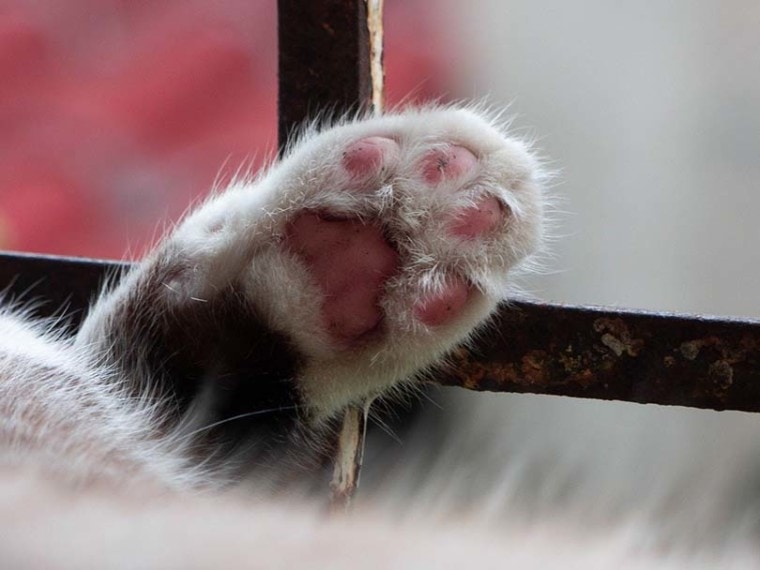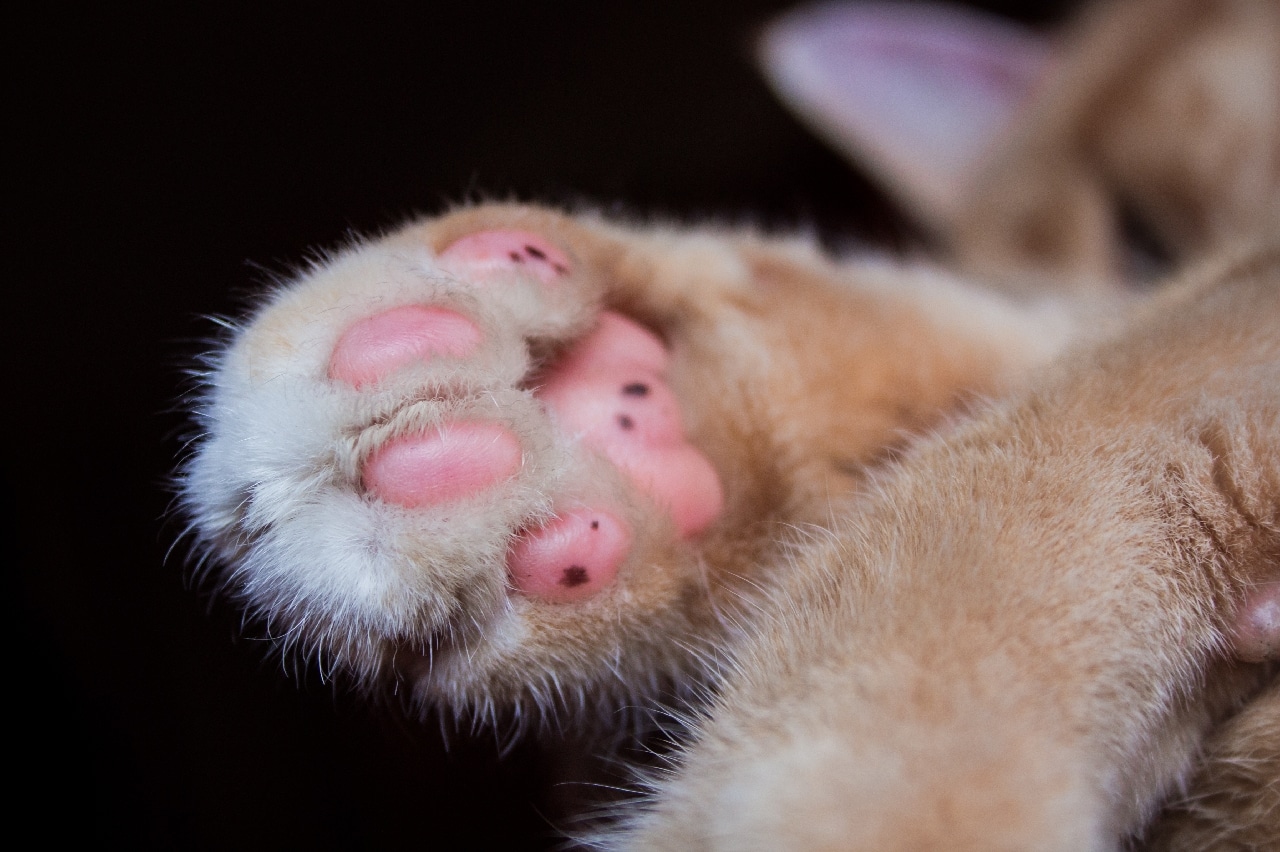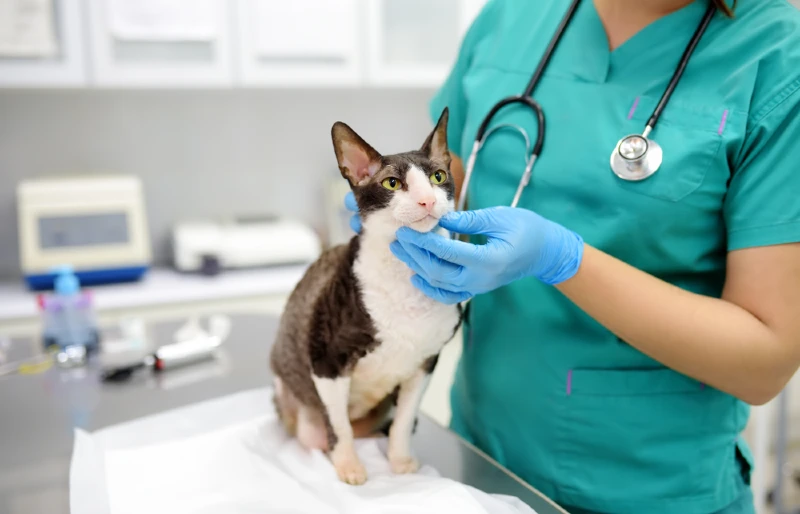
Our kitty’s toe beans have to be one of the cutest features. They love to bat you, grab ahold of you, and gently wrap their paws around your finger. After naptime, they reach out their little pink tootsies and give you a big yawn.
But what is a standard color for pads on a cat? Those pads can vary in color from cat to cat, but once they are born, they should stay that color. So, if you have recently noticed a change in your cat’s paw pad appearance, here are a few reasons why that might be.
What Are Paw Pads?

Paw pads are the cushions of tissue on your cat’s feet. They take on lots of damage, acting as a shield between soft, vulnerable tissue and the ground.
You might think of soft, pinkish paw pads when you consider a cat’s dainty feet. However, paw pads can also be black, lavender, and even spotted.
What Do Paw Pads Usually Look Like?
All pads are made of fatty tissues—both collagen and adipose. But there are three different types of pads on your kitty’s tootsies:

Different portions of your cat’s paw pads protect against the terrain, absorb shock, and provide traction.
The 4 Reasons for Paw Pad Color Changes
There can be a few different reasons paw pads might change. Some of them are quite obvious, while others may require a second opinion. Here are the main causes—and what you can do to help your kitty.
1. Injury
One of the most obvious reasons for changes of color in the pads is injury. Any kind of injury can scar and damage the pads, causing discoloration.
Some injuries involving the paw pads might be apparent, like an open wound. However, this discoloration can also come from other forms of injury, such as:
Sometimes, the injury will be pronounced, but other times, you might need a vet to take a look. Some injuries might require stitching, bandages, or medications to help your cat heal.

2. Vitiligo
Vitiligo is a harmless skin condition that changes the color of the affected area. What is interesting about vitiligo Is that it can affect pets the same way that it affects people. It causes painless white patches to form on the skin and fur.
If you see it on your cat’s paw pads, you probably also notice it elsewhere on their body. It is especially prevalent on the face and the nose. This condition usually develops over time, and it’s not a problematic issue for your cat.
Vitiligo can be both hereditary and autoimmune disease-related. It can also be caused by long periods of stress or some other kind of injury.
3. Plasma Cell Pododermatitis
If your cat’s paw pad is swollen with a purplish tint, your cat could have plasma cell pododermatitis. This condition happens when the paw pad is inflamed, looking somewhat like a pillow. This condition is caused by excessive plasma cell development to protect the body against inflammation and infection.
Typically there is something else going on with the immune system at that time that causes this condition.
Symptoms of Plasma Cell Pododermatitis
To diagnose this condition correctly, your veterinarian will run tests to see if your cat has high levels of lymphocytes and antibodies in its system. There is a chance that a biopsy could be an order on the affected foot as well.
If this condition is determined, in fact, to be the cause, typically your vet will prescribe antibiotics such as doxycycline to reduce the issue.

4. Anemia
If your cat’s paw pads turn very pale, your cat might have anemia. Anemia is the decrease of red blood cells as a result of low iron. These red blood cells carry oxygen to the body. If your cat becomes anemic, there can be a whirlwind of other symptoms that come along with it. Anemia can also have several causes.
Symptoms of Anemia in Cats
Your veterinarian will assess your cat to determine the underlying cause of the anemia. Typically, they test the blood first to see just how anemic your cat is.
Some underlying causes of anemia can be:
Ultimately, lab tests are necessary to uncover the cause. Treatment plans are determined after the proper diagnosis is given.
Final Thoughts
If you notice that your cat’s paw pads have changed color, look for other cues as to what might be wrong. Chances are, there will be accompanying signs or symptoms.
It’s crucial to get your cat to the vet for a checkup to determine the underlying cause. It could be something totally manageable or harmless. Other times, it could require further treatment, testing, or suturing. Never neglect bodily changes with your beloved feline friends.
You might also be interested in:
- How to Protect Your Cat’s Paws from Hot Pavement (5 Tips)
- 11 Fascinating Facts About Your Cat’s Paws (Vet-Approved)
Featured Image Credit: Aldair-Pho, Pixabay






